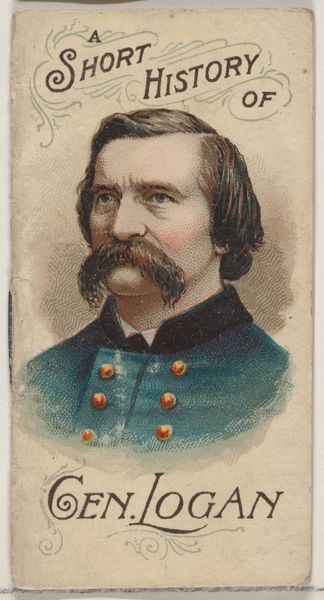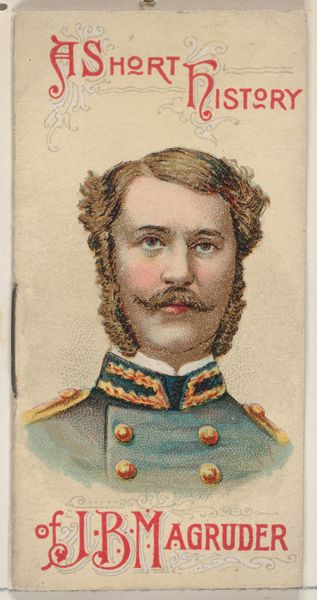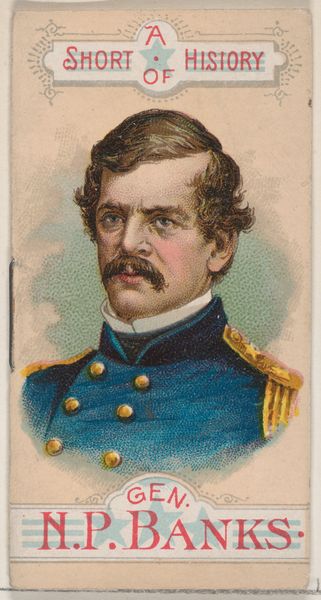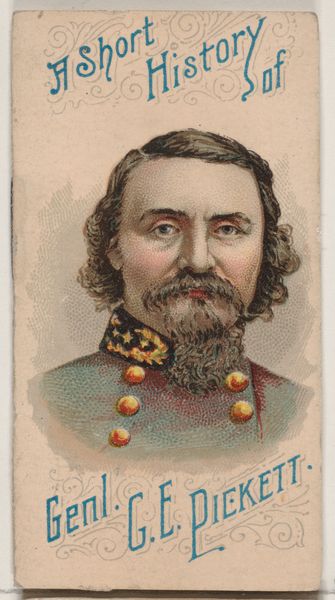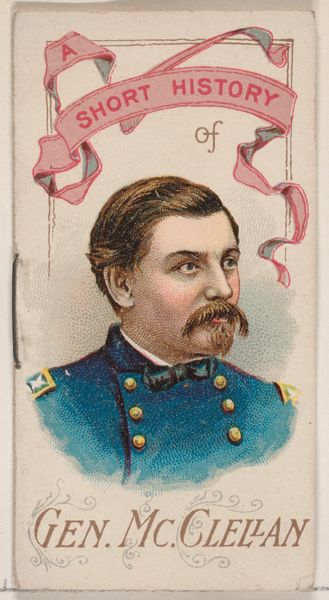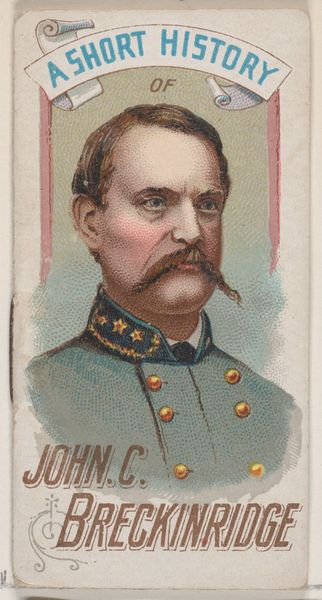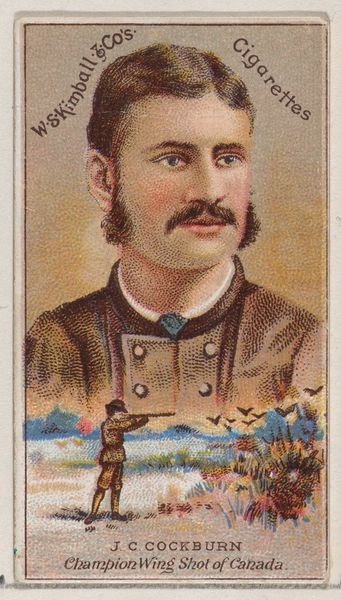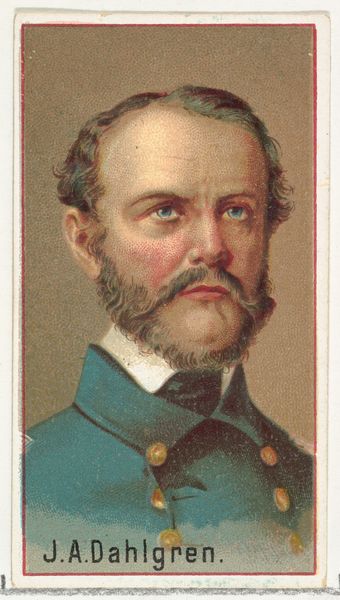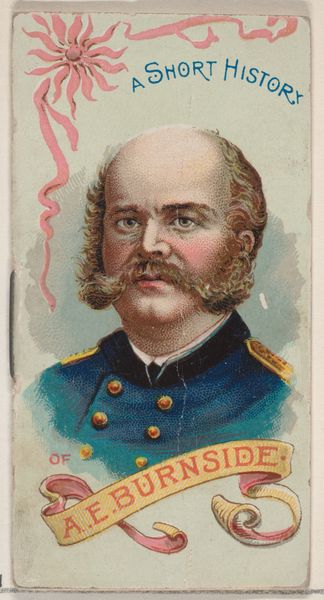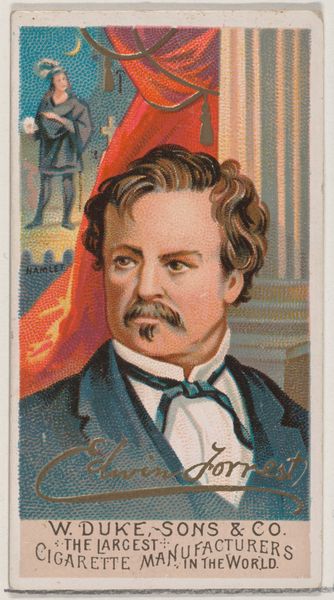
A Short History of General Albert Sydney Johnston, from the Histories of Generals series of booklets (N78) for Duke brand cigarettes 1888
0:00
0:00
drawing, coloured-pencil, print
#
portrait
#
drawing
#
coloured-pencil
# print
#
caricature
#
caricature
#
coloured pencil
#
men
#
history-painting
Dimensions: Overall (Booklet closed): 2 3/4 × 1 1/2 in. (7 × 3.8 cm) Overall (Booklet open): 2 3/4 × 2 7/8 in. (7 × 7.3 cm)
Copyright: Public Domain
Editor: Here we have "A Short History of General Albert Sydney Johnston," a print made in 1888 by W. Duke, Sons & Co. It's quite a small portrait. I'm struck by the symmetrical composition and how contained he looks within that ornate frame. How do you approach a piece like this? Curator: Well, focusing on its intrinsic qualities, one observes a tight composition. The figure of General Johnston is centrally placed. Note the careful balance achieved through color, the muted tones offset by the subtle blush in the cheeks and the gilt detailing on the uniform. How do you perceive the relationship between the subject and the ornate border? Editor: It's interesting, that border. It feels almost like a decorative cage. The colours create a rigid formality. But the way he seems to stare straight out, like he has something to say, gives it tension. Is there a theoretical aspect at work? Curator: Yes, through semiotics we discern coded meanings. The symmetry could symbolize order and control. His gaze engages the viewer directly. Considering the print's materiality, its small size as a cigarette card speaks volumes. It transforms a historical figure into a consumer object, packaged for mass consumption. Editor: So, the form betrays its function – promoting cigarettes, more than honoring a general? Curator: Precisely. Consider how color and form underscore this intention, and consider how that intent shapes your impression of the subject and that rigid frame you mentioned. The colours attract you to its aesthetic while the function repulses your higher understanding. The formal tension of that duality betrays the inherent nature of the function. Editor: I see now, thinking about the image purely as a designed object really shifts how you see it. The historical content becomes secondary. Curator: Indeed, the design itself takes precedence. Now, perhaps we should contemplate the historical implications another time. Editor: Well, thanks for your perspective! It really opens my eyes to consider art beyond its subject matter.
Comments
No comments
Be the first to comment and join the conversation on the ultimate creative platform.
